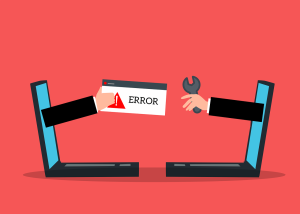Fail Fast

The “Fail Fast” principle is a software development approach that encourages systems to detect errors and failures early in the process. By identifying problems quickly, developers can address them before they grow into larger, more complex issues. In this article, we’ll explore what “Fail Fast” means, why it’s important, and how to implement this approach in your software development process.
What is the Fail Fast Principle?
The Fail Fast principle refers to the idea of designing software systems that fail as soon as an error is detected, rather than continuing execution and potentially propagating the error. The goal is to catch issues early in the process, ideally before they affect the system’s behavior or the user’s experience.
In simple terms, a system that “fails fast” immediately alerts developers or stops execution when an error occurs, providing immediate feedback. This is in contrast to systems that allow errors to silently occur, potentially leading to more complicated and harder-to-debug issues later.
How Does Fail Fast Work?
Failing fast is typically implemented in a few key ways:
- Validation: Before performing critical operations (such as database queries or file handling), the system checks for any invalid data or conditions. If an issue is found, the system fails early, often by throwing an exception or returning an error response.
- Error Handling: When an error is encountered, the system immediately halts further processing and returns an error message or status code to inform the developer or user about the problem.
- Assertions: Code assertions are used to ensure that certain conditions are true at runtime. If the condition fails, the system halts immediately, preventing further incorrect behavior.
Why is Fail Fast Important?
The Fail Fast principle is important for several reasons, particularly in complex software systems where early detection of errors can save time, effort, and resources.
1. Early Problem Detection
Failing fast allows developers to catch errors early in the development process, when they are easier to identify and fix. By stopping execution at the point of failure, the system can provide clear feedback about the issue, making it easier for developers to debug and resolve it.
2. Improved Debugging
When errors are detected immediately, developers can pinpoint the cause of the failure more quickly. Delayed error detection can lead to more complex and harder-to-trace issues, as the error may have spread or caused unintended side effects.
3. Reduced Complexity
By failing fast, you simplify the error-handling process. Rather than handling errors and trying to recover from them throughout the system, you stop the process as soon as an issue is detected. This reduces the complexity of the system, as developers don’t need to worry about failure propagation or dealing with errors after the fact.
4. Better User Experience
In user-facing applications, failing fast can prevent users from experiencing confusing or inconsistent behavior. If the system encounters an issue, it can stop immediately and display an error message, rather than continuing to function in a broken state that might mislead or frustrate the user.
How to Implement Fail Fast
Here are some strategies for applying the Fail Fast principle in your development process:
1. Validate Input Early
Before processing data, ensure that it meets the expected format and constraints. This can be done with input validation checks, such as verifying that required fields are present, checking for null or empty values, and ensuring data types are correct. If any validation fails, reject the input immediately, preventing further errors down the line.
2. Use Assertions
Assertions are used to enforce conditions in your code that must always be true. For example, you might assert that a variable is not null before proceeding with an operation. If the assertion fails, the program stops execution and notifies the developer of the issue. Assertions help you detect programming errors early in the development process.
3. Return Early in Functions
In functions or methods, return as soon as you detect an invalid state. This prevents the function from continuing and causing unexpected behavior later. For example, if you encounter invalid user input, return an error response early instead of continuing to process it.
4. Fail Fast in Distributed Systems
In distributed systems, such as microservices, the Fail Fast principle can be applied by ensuring that services immediately report failures and stop processing when they encounter issues. This prevents cascading failures and reduces the impact of issues across the system.
Challenges of Implementing Fail Fast
While the Fail Fast principle offers many benefits, there are some challenges in implementing it effectively:
1. Overuse of Fail Fast
Overusing the Fail Fast principle can lead to unnecessary complexity and reduced flexibility. If every small issue causes the system to stop, it may become difficult to manage the flow of execution. It’s important to balance Fail Fast with a reasonable approach to error handling that considers the nature of the problem.
2. User Experience Impact
If not handled carefully, failing fast can negatively impact the user experience. For example, displaying cryptic error messages or stopping the system too abruptly can confuse users. It’s important to ensure that when an error occurs, it is communicated clearly to the user in a way that is helpful and not disruptive.
Conclusion
The Fail Fast principle is a valuable approach to building robust, reliable software systems. By detecting errors early in the process, you can improve debugging, reduce complexity, and prevent issues from escalating. However, it’s essential to implement Fail Fast thoughtfully, ensuring that it enhances the development process without negatively impacting the user experience or adding unnecessary complexity. When used correctly, Fail Fast helps developers create high-quality, maintainable software that performs well even in the face of unexpected failures.